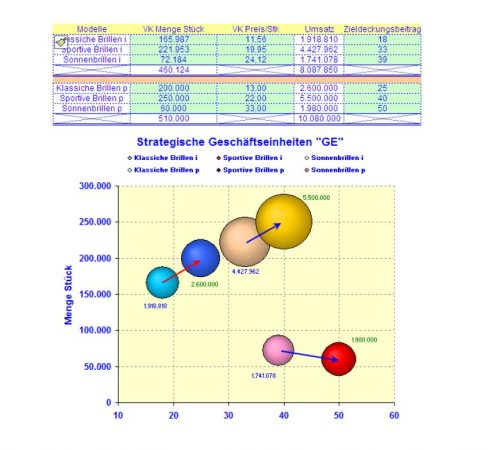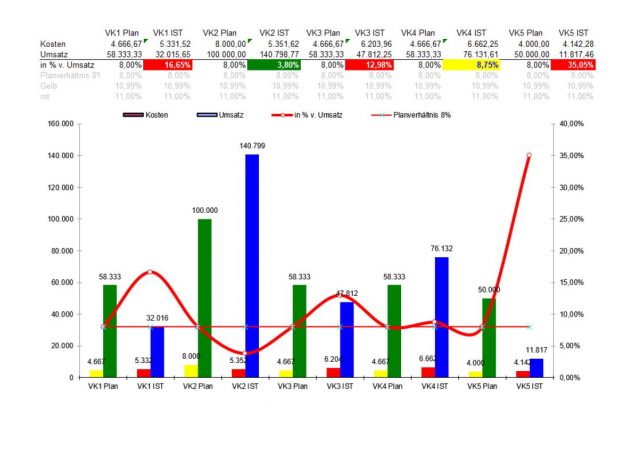Sales controlling starts here…

Visualization of the sales planning
Initial situation:
This case company is a manufacturer from the consumer goods industry. The sales planning is usually treated very negligent in a relation with the cost & performance planning. The sales volume planning forces to a quantity structure – who sold when and where how much? The sales planning plus x% more is to be combined with the ideal bonus. This is in line with the corporate philosophy.
Actions:
Targeted information creates understanding of the importance of sales planning and the impact on purchasing and production planning. Detailed sales planning according to sales volumes, sales and contribution margins, per article (groups), sales area, distribution channels etc…. are the basis for the sales success.
The customer benefit analysis gives the entire company feedback on strengths and weaknesses. The result is a recommendation for action where the weighting can be used to generate the fastest quick wins.
This method brings enormous transparency into the question “can the turnover be really generated?” (verification of the feasibility is extremely well received by banks!)
The by-product is a catalog of arguments that provides the sales with the arguments needed for a successful sale. All scenarios can be played through.
Benefits:
As early as in 1966, Herzberg explained the power of setting and achieving goals at the center of his work. “Setting goals”. There is a lot of discussions in relation to the remuneration system. Here you should really go into the staff, there should be sales types without bonuses?

Questions on planning "MARKETING & SALES"
- What sales statistics already exist (article-wise, geographically, customer groups)?
- How many customers account for 50% (ev. 30%) of sales?
- Are the sales of e.g. last five years influenced by one-off big business?
- What are the most important customers (sales figures)?
- To what extent are the customers associated with the current company owner?
- Are there major seasonal fluctuations in sales, dependencies on weather, fashion trends and the like?
- How is the sale organized?
- How is customer service organized?
- Are guarantees granted? Is there a product liability insurance?
- Are there any market analysis or forecasting studies available?
- How is the future of the most important items distributed evaluated today?
- Can new sales markets be developed for the existing product range?
- Which competition and substitution articles exist? How are they evaluated?
- Does the competition come mainly from domestic or foreign companies?
- Is it probable that in the coming years products can be pushed out of the market or can be replaced with new products (with the same margin) in the right time (innovation problem)?
- Which activity predominates, sales or production?
- Are there any articles that in a case of a sale of the company, triggered by:
a) the buyer or
b) the seller
can be no longer produced?
18. How is the clientele affected by the intended divestiture of the business (for example, loss of the individual customers)?


